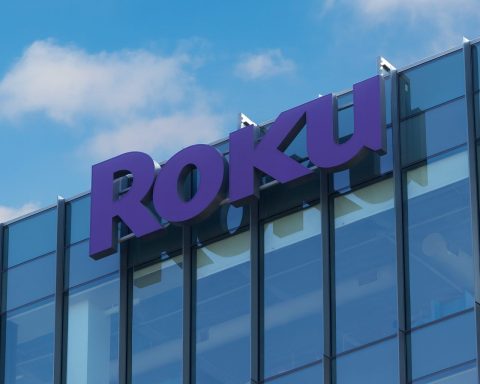Uber stock (NYSE: UBER) is trading around $91.62 as of the latest close (15 November 2025), roughly 10% below its 52‑week high of $101.99 and well above its 12‑month low of $59.33. [1] Despite a recent pullback following Q3 earnings, the shares remain up by about mid‑40% year to date and more than 200% over the past three years, reflecting Uber’s transformation from cash-burning disruptor to highly cash-generative platform. [2]
At the same time, Uber is leaning hard into autonomous vehicles (AVs), signing multi‑year deals to deploy tens of thousands of robotaxis with partners like Lucid, Nuro, NVIDIA, Stellantis, Momenta, WeRide and Avride. [3] Those bets excite the market — but also raise big questions about risk, regulation and timing.
This article looks at what changed for Uber stock in November 2025, the latest Q3 numbers, the robotaxi strategy, current valuation and a forward-looking outlook for 2026–2027. It is informational only and not financial advice.
1. Uber stock performance in November 2025: earnings hangover, still a big winner YTD
Short‑term pullback after a big run
- Price now: ~$91.6
- 52‑week range: $59.33 – $101.99 [4]
- Market cap: ~$190 billion
- Trailing P/E: ~11.8x GAAP earnings (inflated by one‑off tax benefits) [5]
According to multiple valuation and performance trackers, Uber shares are still up around 45% year to date and over 200% in three years, but have slipped around 8% over the last week and a few percent over the past month as investors digest Q3 results and legal risks. [6]
On the technical side, Uber now trades:
- Below its 50‑day moving average (~$95.50)
- Near its 200‑day moving average (~$91.6) [7]
That setup typically signals a pause or consolidation after a strong rally rather than outright trend reversal, but it does show that buyers are no longer chasing the stock at any price.
Heavy institutional flows — both ways
Today (16 November 2025), filings highlighted two opposing institutional moves:
- Intech Investment Managementincreased its stake by 27.4% in Q2, to 95,004 shares worth about $8.9 million. [8]
- Empower Advisory Groupcut its position by 93.7%, selling 874,377 shares and retaining 58,810 shares worth about $5.5 million. [9]
Overall, about 80% of Uber’s float is held by institutions, while insiders own ~3.8% and have sold nearly 600,000 shares over the last 90 days. [10]
This pattern suggests strong institutional interest, but also some profit‑taking and portfolio rebalancing after a big multi‑year run.
2. Q3 2025: strong growth, massive cash, messy bottom line
Uber’s Q3 2025 results (reported 4 November) are the main driver of November’s volatility.
Top‑line and operating performance
For the quarter ended 30 September 2025, Uber reported: [11]
- Trips: 3.5 billion, up 22% YoY
- Monthly Active Platform Consumers (MAPCs): 189 million, up 17% YoY
- Gross bookings:$49.7 billion, up 21% YoY
- Revenue:$13.5 billion, up 20% YoY
- Income from operations:$1.1 billion, up 5% YoY
- Adjusted EBITDA:$2.3 billion, up 33% YoY, with margins improving to 4.5% of gross bookings
- Free cash flow:$2.2 billion for the quarter; trailing‑12‑month FCF ~ $8.6–8.7 billion [12]
Operationally, this was another “record profitability plus accelerating growth” quarter, especially in Delivery, which grew revenue ~29% YoY and now rivals Mobility in scale. [13]
The $479 million legal hit — and a very noisy EPS
The controversy sits below the top line:
- Uber took a $479 million charge tied to “legal proceedings or governmental investigations,” which dented operating profit relative to analyst expectations. [14]
- At the same time, net income was inflated by one‑offs:
- A $4.9 billion tax valuation release
- About $1.5 billion of pre‑tax gains from revaluing equity investments [15]
As a result, Uber reported GAAP EPS of about $3.11, smashing consensus of roughly $0.67 — but in a way that many investors see as low‑quality earnings, given the heavy reliance on tax and investment gains. [16]
That explains why:
- Headlines read “earnings beat, stock down,” and
- Shares fell around 5–7% in immediate trading after the release, despite strong revenue and bookings growth. [17]
Q4 2025 guidance: still pointing to strong holiday quarter
For Q4 2025, Uber guided to: [18]
- Gross bookings:$52.25–$53.75 billion, +17–21% YoY
- Adjusted EBITDA:$2.41–$2.51 billion, +31–36% YoY
Those numbers beat Wall Street booking expectations and imply further margin expansion. Reuters also highlighted that the Uber One membership program (now >36 million members and driving over one‑third of bookings) is a key driver of recurring usage and cross‑sell. [19]
In short, the business engine looks excellent, but investors are wrestling with:
- Ongoing legal/regulatory risk,
- How sustainable the profitability improvements are, and
- The timeline and payoff of autonomous investments.
3. Capital returns: a $20 billion buyback and growing FCF
Uber has shifted decisively into capital‑return mode.
- In August 2025, the board authorized a new $20 billion share repurchase program, on top of an earlier $7 billion plan. [20]
- Management has already accelerated buybacks, repurchasing roughly $4.6 billion of stock year‑to‑date vs about $700 million in the comparable period last year. [21]
- Uber ended Q3 with $9.1 billion in cash and short‑term investments and plans to redeem $1.2 billion of convertible notes in Q4 2025. [22]
Given a market cap around $190 billion and trailing free cash flow of roughly $8.7 billion, Uber’s FCF yield is around 4.5–4.7% — modest, but notable for a company still growing revenue around 20% annually. [23]
From an equity story perspective, Uber is now clearly positioned as a profitable platform returning cash to shareholders, not just a growth experiment.
4. The robotaxi mega‑strategy: upside vs risk
One of the biggest November 2025 themes for Uber is its aggressive autonomous vehicle (AV) roadmap.
Major AV partnerships and pilots
Over the past few months, Uber has announced or expanded a series of high‑profile AV deals:
- Lucid + Nuro (premium robotaxis)
- NVIDIA + Stellantis (global AV infrastructure)
- WeRide in Saudi Arabia
- In October, Uber and WeRide began offering autonomous robotaxi rides in Riyadh, on dedicated routes between Roshn Front and Princess Noura University — the first AVs on Uber’s platform in Saudi Arabia. [28]
- Avride in Dallas
- Autonomous startup Avride is ramping up testing of Hyundai Ioniq 5‑based robotaxis in Dallas to join the Uber platform by the end of 2025. [29]
- Momenta in Germany & Europe
- Uber and Chinese AV company Momenta will test fully driverless Level 4 cars in Munich starting in 2026, as a precursor to a broader European robotaxi roll‑out, potentially in additional EU cities. [30]
- On top of that, Uber is building an AV “data factory” with NVIDIA, aiming to collect 3 million+ hours of robotaxi‑specific driving data to train and validate advanced autonomy models. [31]
Taken together, Uber is trying to position itself as the neutral marketplace for AV fleets worldwide, integrating a dozen or more partners into one demand platform rather than building its own full in‑house stack.
The competitive AV threat
The opportunity is huge, but so is the disruption risk:
- Alphabet’s Waymo and Tesla’s robotaxi network could undercut Uber’s take rates or route trips through their own closed ecosystems. [32]
- Uber already partners with Waymo in select US cities, but that doesn’t guarantee long‑term alignment. [33]
Analysts and commentators are split:
- Bullish takes argue that Uber’s scale, app engagement and payment infrastructure make it the natural distribution layer for AV fleets, allowing it to take a healthy cut while avoiding capex on the vehicles themselves. [34]
- Bearish views see a risk that fully autonomous networks will squeeze Uber’s margins, or that big tech and automakers will capture most of the economics by going direct. [35]
Importantly, Uber’s own CEO has warned that AV investments will lose money for years before turning profitable, which helps explain why some investors reacted nervously to the Q3 call. [36]
5. How is Uber stock valued now?
Classic valuation metrics
Based on recent data and market commentary: [37]
- Price: ~$92
- Trailing GAAP P/E: ~11.7–11.8x (inflated by one‑off tax/equity gains)
- Underlying “normalized” P/E (forward): Motley Fool estimates around 23x forward earnings, adjusting for non‑recurring items.
- Price-to-free‑cash‑flow (P/FCF): ~22x on ~US$8.7B TTM FCF.
- Balance sheet: debt‑to‑equity ~0.37, with ample liquidity relative to near‑term obligations. [38]
External fair‑value estimates
Different research shops see very different “fair values”:
- Simply Wall St
- DCF‑based intrinsic value around $168 per share, implying Uber is ~45% undervalued, with a P/E of 11.5x versus a transport industry average of ~26.8x. [39]
- Morningstar
- Assigns Uber a 3‑star (“fairly valued”) rating with a fair value estimate around $93 per share, assuming mid‑teens annual revenue growth for the next five years. [40]
- Analyst consensus
In other words, most of Wall Street still likes Uber stock, but there is significant disagreement on how much of the AV and platform upside is already priced in.
6. Key catalysts and risks for 2026–2027
Positive drivers
- Sustained mid‑teens growth
- Management guidance and third‑party forecasts point to low‑ to mid‑teens annual revenue growth over the next five years, supported by Mobility, Delivery and cross‑platform subscriptions like Uber One. [43]
- Margin expansion & FCF growth
- Robotaxi execution
- Successful launches with Lucid/Nuro in the US, WeRide in the Middle East, Momenta in Europe and Stellantis/NVIDIA globally would reinforce Uber’s role as the aggregator of global AV fleets, potentially boosting margins by reducing driver‑related costs on a portion of trips. [46]
- Network and data advantage
- Uber’s scale (nearly 190M MAPCs, 3.5B trips per quarter) gives it a data and demand edge that new entrants struggle to match, particularly in Delivery and grocery, where cross‑sell from rides is strong. [47]
Main risks
- Regulatory & legal overhang
- The $479M Q3 legal charge shows that regulatory risk is very real, especially around labor classification, taxes and local transport rules. Future settlements or fines could pressure margins. [48]
- Autonomy disruption
- If Waymo, Tesla or other AV players successfully build large closed robotaxi networks, they could bypass Uber, compress its take rate, or capture the most profitable routes. [49]
- Execution risk on AV partnerships
- Multi‑partner AV integration is complex. Delays, safety incidents or regulatory pushback could slow deployment or raise costs, weakening the bullish AV narrative. [50]
- Macro & competition
- Slower global growth or consumer weakness could hit discretionary ride‑hailing and delivery spend. Meanwhile, competitors like Lyft and regional “super‑apps” keep pricing pressure high in some markets. [51]
7. Uber stock forecast: base, bull and bear scenarios
These are qualitative scenarios, not price targets or recommendations.
Base case (most likely, in many analyst models)
- Revenue growth: Maintains low‑ to mid‑teens annual growth through 2026–2027.
- Margins: Adjusted EBITDA continues to rise as a % of gross bookings; FCF grows in line or slightly faster than revenue.
- AV impact: Early robotaxi deployments stay small but growing, adding marketing buzz and some margin benefit on select routes, but not yet transformational.
- Valuation: Market treats Uber as a profitable, growing platform with moderate AV optionality, keeping the stock somewhere around mid‑ to high‑teens forward P/E. In this scenario, the share price gravitates toward the current analyst average near $108 over 12–24 months, assuming no major macro shock. [52]
Bull case (robotaxis & buybacks really work)
- Revenue: Growth stays high‑teens or better as AV services, grocery, retail and high‑engagement Uber One cohorts scale globally.
- Margins & FCF: AV deployment lowers per‑trip costs at the margin while FCF rises into the low‑double‑digit billions annually. Buybacks meaningfully shrink the share count.
- Market view: Uber is re‑rated as a dominant mobility + delivery + AV infrastructure play, with investors willing to pay a higher multiple for perceived long‑term “railroad‑like” economics.
- Implication: In this upside case, it’s conceivable that the stock pushes toward the upper end of current price target ranges (e.g., $130–$150) over the next few years — but this would require clean execution on AV and very cooperative regulators, so it is far from guaranteed. [53]
Bear case (legal, AV and competition bite)
- Legal hits: Additional large legal or regulatory charges materially reduce reported earnings and spook investors.
- AV disappointment: Robotaxi rollouts are delayed, hit by safety concerns, or dominated by closed ecosystems from Waymo/Tesla and others. Uber’s AV narrative weakens, and take‑rate pressure emerges. [54]
- Macro/competition: A weaker consumer environment or more aggressive pricing from rivals slows growth into single digits.
- Valuation: Uber is treated more like a mature cyclical transport stock rather than a high‑growth platform, with a lower earnings multiple. In such a case, the share price could drift back toward the lower end of current analyst estimates (e.g., $70s or even high $60s), especially if growth disappoints while legal and AV spending stay high. [55]
8. Is Uber stock a buy now?
From a news‑driven and fundamental standpoint as of 16 November 2025:
- The core business looks very strong: high‑teens growth, rising margins, ~$8.7B in annual FCF, and a large buyback authorization. [56]
- The stock trades at a reasonable multiple vs its growth, with most analysts seeing moderate upside from here. [57]
- However, regulatory and AV risks are significant and long‑dated, and recent legal charges show that headline surprises can hit earnings even when the underlying business performs well. [58]
For risk‑tolerant, long‑term investors, many professional commentators see Uber as a compelling but volatile growth‑and‑cash‑flow story that needs to be watched closely — particularly around regulatory developments and the emerging robotaxi landscape. [59]
For more cautious investors, the more prudent approach is often to treat AV upside as a free (or low‑priced) option and focus on whether today’s price is justified purely by the Mobility + Delivery + Freight cash flows, ignoring any blue‑sky robotaxi scenarios.
Either way, the next 12–18 months of earnings calls — and the first real‑world robotaxi deployments at scale — are likely to be crucial inflection points for the Uber stock narrative.
Disclaimer: This article is for informational purposes only, based on publicly available data as of 16 November 2025. It does not constitute investment advice, recommendation, or an offer to buy or sell any security. Always do your own research or consult a licensed financial adviser before making investment decisions.
References
1. www.marketbeat.com, 2. simplywall.st, 3. investor.uber.com, 4. www.marketbeat.com, 5. www.marketbeat.com, 6. simplywall.st, 7. www.marketbeat.com, 8. www.marketbeat.com, 9. www.marketbeat.com, 10. www.marketbeat.com, 11. investor.uber.com, 12. investor.uber.com, 13. investor.uber.com, 14. fortune.com, 15. investor.uber.com, 16. www.marketbeat.com, 17. www.barrons.com, 18. investor.uber.com, 19. www.reuters.com, 20. investor.uber.com, 21. www.nasdaq.com, 22. investor.uber.com, 23. www.nasdaq.com, 24. lucidmotors.com, 25. apnews.com, 26. investor.uber.com, 27. investor.uber.com, 28. investor.uber.com, 29. www.reuters.com, 30. www.theverge.com, 31. investor.uber.com, 32. www.nasdaq.com, 33. apnews.com, 34. www.nasdaq.com, 35. www.ft.com, 36. www.ft.com, 37. www.marketbeat.com, 38. www.marketbeat.com, 39. simplywall.st, 40. www.morningstar.com.au, 41. stockanalysis.com, 42. stockanalysis.com, 43. investor.uber.com, 44. investor.uber.com, 45. www.nasdaq.com, 46. investor.uber.com, 47. investor.uber.com, 48. fortune.com, 49. www.nasdaq.com, 50. www.sfchronicle.com, 51. www.businessinsider.com, 52. stockanalysis.com, 53. www.quiverquant.com, 54. www.ft.com, 55. stockanalysis.com, 56. investor.uber.com, 57. stockanalysis.com, 58. fortune.com, 59. www.nasdaq.com







